
The Simplified Quick Guide to SEO
SEO is a long-term game, not a quick fix. Avoid anyone promising quick rankings for a few bucks. You've heard this multiple times. But what options do you have if you are a new entrepreneur with a small budget and zero knowledge on how SEO works?
The SEO Guide Preview
Well, rather than going with cheap services which often use spammy tactics that can hurt your site in the long run, why not spend a weekend learning the basics of SEO and start doing it yourself until you can afford a decent service?
Here's how our simplified quick guide to SEO will help you out:
Learn SEO in plain English
Improve your site’s visibility by creating helpful content that answers your audience's questions
Get your site found faster with solid technical SEO
Set up Google tools like Search Console and Analytics with ease (yep, they are free!)
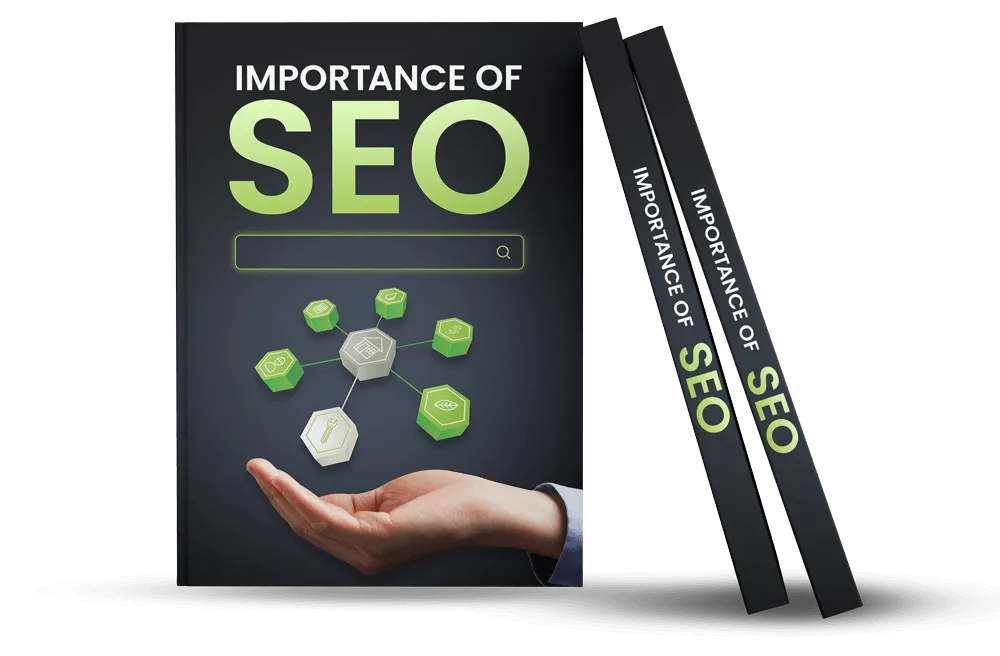
Download the PDF and use it at your own pace
Table of Contents
Part 4: All About On-Page SEO
Part 5: All About Off-Page SEO
Part 6: All About Technical SEO
Part 7: Voice Search Optimization
Part 1: How Do Search Engines Work?
The way a search engine functions is incredibly complex. Also, Google is too secretive about exactly how it works, but over the years, they have revealed a key amount of information. We will disclose those later in this guide. When you search for a query on Google, you'll expect it to provide you with the most relevant information. Just imagine, if you search for "cat food" and Google returns information about fish tanks, will you ever rely on Google? Of course, no.
Google primarily uses three processes to provide you with the most relevant information.
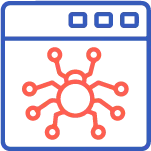
1. Crawling
Crawling is the process in which Google sends a group of bots, called crawlers or spiders, to find new and updated content on the web. Google first finds some pages and follows the links on those pages to find other pages. However, if your website is new, you won't have many backlinks. So, there's a high chance for Google crawlers to miss your page. You should submit your sitemap to Google through Google Search Console to solve this issue. Let's discuss the process of submitting the sitemap later in this guide.

2. Indexing
After completing the crawling process, Google analyzes your pages for the necessary information and stores them in its index. An index is a massive database that contains information about billions of web pages. Efficient indexing ensures that your web pages are discoverable and accurately categorized. Factors like a clear site structure, optimized meta tags, and properly labeled images can significantly improve how your content is indexed. Conversely, issues such as broken links, duplicate content, or slow loading speeds can hinder the indexing process, reducing your website's visibility in search engine results.

3. Ranking
Through the ranking process, Google displays the most relevant page for users' search queries. In other words, when you search for a query on Google, it'll bring up and rank the most relevant pages from its index. Now we hope you got a clear idea of how search engines work. Summing up, Google first sends crawlers to find new pages on the web. Next, it analyzes those pages and stores it in its index. Then, when a user searches for something, Google will provide him with the most relevant information from the index.
Part 2: Different Types of SEO
01. On-Page SEO
On-page SEO refers to optimizing the content on your web pages to make them rank higher in the search results.
The following are some of the most important on-page SEO factors:
Page content
Keyword optimization
Title tag
Header tags
Meta description
Image optimization
URL optimization
Internal linking
Mobile-friendliness
Voice search optimization
Let's discuss these factors in detail in the 4th part of this guide.
02. Off-Page SEO
Off-page SEO refers to everything you do outside your website to improve its rankings in the search results.
The following are some of the most important off-page SEO factors.
Link building
Social media marketing
Local SEO
Among all the off-page SEO factors, link building (backlinks) holds the highest significance. Backlinks refer to the links you get from other websites.
The more high-quality backlinks your website gets, the better its rankings will be — if you have correctly optimized your website for on-page and technical SEO.
Let's discuss these factors in detail in the 5th part of this guide.
03. Technical SEO
Technical SEO optimizes your website's technical aspects to improve search engine rankings.
The following are some of the most important technical SEO factors.
Site structure and navigation
Loading speed
Sitemap submission
Structured data (Schema markup)
Website security
Deleting or xing broken pages
Breadcrumbs
By addressing these foundational aspects, you ensure that your website is easily accessible to both users and search engine crawlers.
Let's discuss these factors in detail in the 6th part of this guide.
Note: All the on-page, off-page, and technical SEO factors influence the ranking of your website in the search results. Also, the factors we have listed above are the most important among the 200+ factors that Google considers to rank a website.
Part 3: Performing Keyword Research
Keyword Research Basics
The way a search engine functions is incredibly complex. Also, Google is too secretive about exactly how it works, but over the years, they have revealed a key amount of information. We will disclose those later in this guide. When you search for a query on Google, you'll expect it to provide you with the most relevant information. Just imagine, if you search for "cat food" and Google returns information about fish tanks, will you ever rely on Google? Of course, no.
How to Perform a Keyword Research?
1. Choosing an SEO Tool
To perform keyword research, you'll need an SEO tool. Fortunately, there are many good SEO tools out there that you can use to find relevant, high-volume keywords. Some of them include:
SEMRush
Ahrefs
Ubersuggest
All these tools are freemium, which means you have to pay to use their features without limitations. And, to be honest, most SEO tools cost you money. So, you should be ready to spend a couple of dollars on the tool.
Among these tools, we personally rely on SEMRush to perform keyword research as we find it easier to use. However, regardless of your tool, the method of performing keyword research will remain pretty much the same.
Not to mention, SEMRush does give you 10 free keyword searches per day that you can utilize to learn the tool.

2. How to Get Keyword Ideas?
Getting keyword ideas is pretty simple.
For instance, if you're about to write a blog on preparing tea, you can just search for "how to prepare tea" on the tool to know the metrics of that word.
You can also go through the suggestions given by the tool to get more keyword ideas.
You may also use Google's autocomplete feature to find seed keywords.
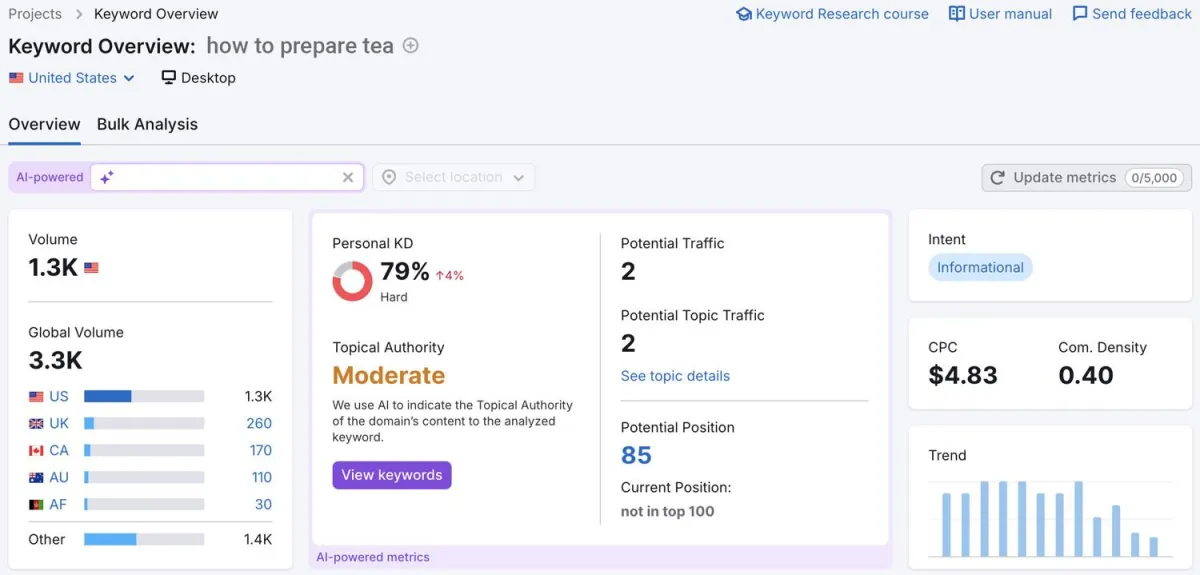
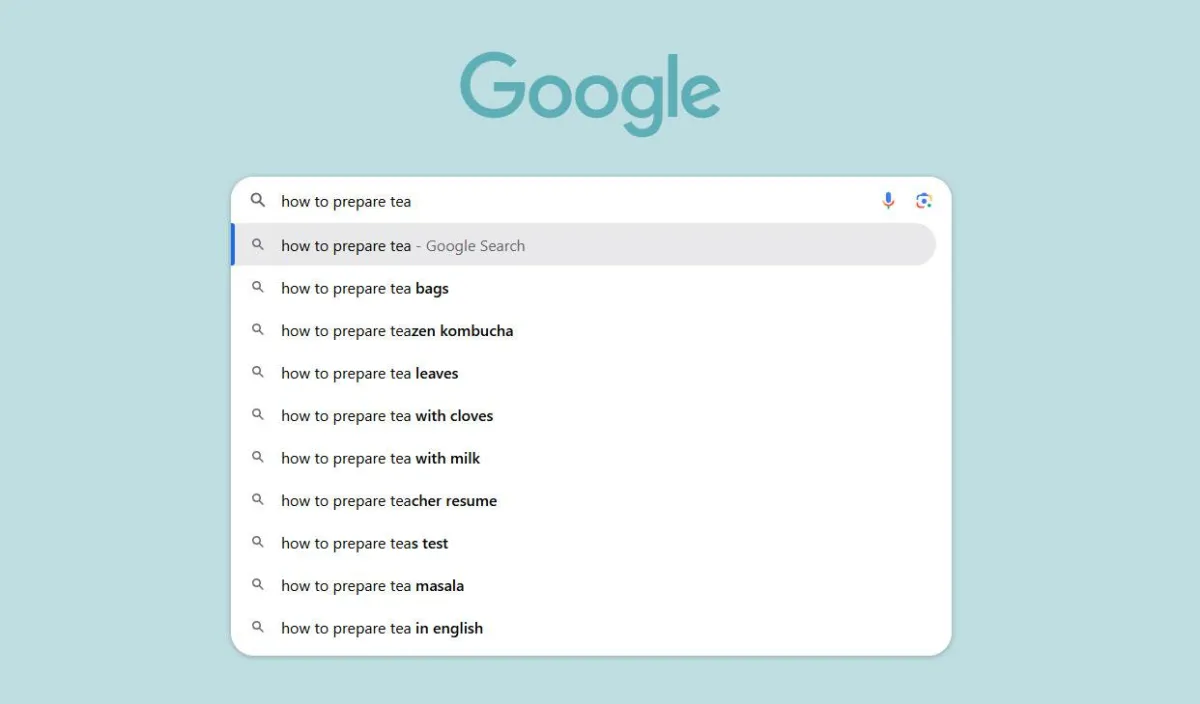
3. How to select the best keyword?
Once you get the keyword ideas, it's time to analyze them and choose the best keyword for your content
When analyzing the keyword's data, the following are the three metrics you should keep an eye on:
SEARCH VOLUME
KEYWORD DIFFICULTY
TREND
Your goal is to find keywords with a relatively high search volume and low difficulty. If you're not into seasonal business, the keyword should have a consistent search volume throughout the year
1. Search Volume
Getting keyword ideas is pretty simple. For instance, if you're about to write a blog on preparing tea, you can just search for "how to prepare tea" on the tool to know the metrics of that word.
It's generally better if your focus keyword has a search volume of more than 1,000. Also, if your business is country-specific, ensure that your target country is among the highest contributing countries to the search volume.
2. Keyword Difficulty
Keyword difficulty indicates the competition for a particular keyword on a scale of 0 to 100. The higher the keyword difficulty, the more difficult it'll be to rank in the search results.
However, in some cases, if you write content on a popular topic, you may look for keywords with a difficulty score of less than 40.
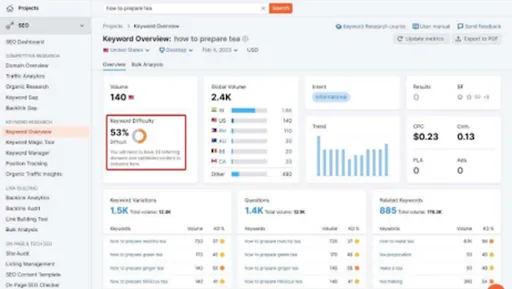
Improve Your Page Ranking Without the Guesswork
Download the Lead Nicely Simplified QuicK Guide to SEO
your step-by-step guide to learning how SEO works
Importance of SEO
Your Cost-Effective Marketing

Get your FREE SEO eBook delivered straight to your inbox

Get it now
Boost visibility
Drive traffic
Build a strategy that scales
Build a brand credibility

"Completely transformed our online presence!"
Our traffic increased significantly and the quality of visitors has improved—leading to higher conversions. It's amazing!!!